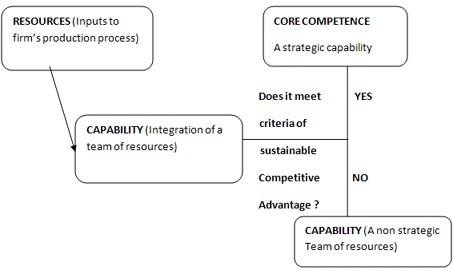Cutting Costs Strategically
April 3, 2025
 Cutting Costs Strategically
Cutting Costs Strategically
The business environment today has become extremely competitive. Companies are not only facing competition from their local competitors but also from global ones. Different economic and geopolitical factors make global supply chains necessary. The problem with having global supply chains is that operations become broad and complex. It is much easier to manage operations located…
 What is Competitive Advantage in the Field of Strategic Management?
What is Competitive Advantage in the Field of Strategic Management?
What is Competitive Advantage? It is a truism that strategic management is all about gaining and maintaining competitive advantage. The term can be defined to mean “anything that a firm does especially well when compared with rival firms”. Note the emphasis on comparison with rival firms as competitive advantage is all about how best to…
 Competitor Analysis – Meaning, Objectives and Significance
Competitor Analysis – Meaning, Objectives and Significance
Organizations must operate within a competitive industry environment. They do not exist in vacuum. Analyzing organization’s competitors helps an organization to discover its weaknesses, to identify opportunities for and threats to the organization from the industrial environment. While formulating an organization’s strategy, managers must consider the strategies of organization’s competitors. Competitor analysis is a driver…
Core competency is a unique skill or technology that creates distinct customer value. For instance, core competency of Federal express (Fed Ex) is logistics management. The organizational unique capabilities are mainly personified in the collective knowledge of people as well as the organizational system that influences the way the employees interact.
As an organization grows, develops and adjusts to the new environment, so do its core competencies also adjust and change. Thus, core competencies are flexible and developing with time. They do not remain rigid and fixed. The organization can make maximum utilization of the given resources and relate them to new opportunities thrown by the environment.
Resources and capabilities are the building blocks upon which an organization create and execute value-adding strategy so that an organization can earn reasonable returns and achieve strategic competitiveness.

Resources are inputs to a firm in the production process. These can be human, financial, technological, physical or organizational. The more unique, valuable and firm specialized the resources are, the more possibly the firm will have core competency.
Resources should be used to build on the strengths and remove the firm’s weaknesses. Capabilities refer to organizational skills at integrating it’s team of resources so that they can be used more efficiently and effectively.
Organizational capabilities are generally a result of organizational system, processes and control mechanisms. These are intangible in nature. It might be that a firm has unique and valuable resources, but if it lacks the capability to utilize those resources productively and effectively, then the firm cannot create core competency.
The organizational strategies may develop new resources and capabilities or it might make the existing resources and capabilities stronger, hence building the core competencies of the organization.
Core competencies help an organization to distinguish its products from it’s rivals as well as to reduce its costs than its competitors and thereby attain a competitive advantage. It helps in creating customer value. Also, core competencies help in creating and developing new goods and services.
Core competencies decide the future of the organization. These decide the features and structure of global competitive organization. Core competencies give way to innovations. Using core competencies, new technologies can be developed. They ensure delivery of quality products and services to the clients.
Your email address will not be published. Required fields are marked *